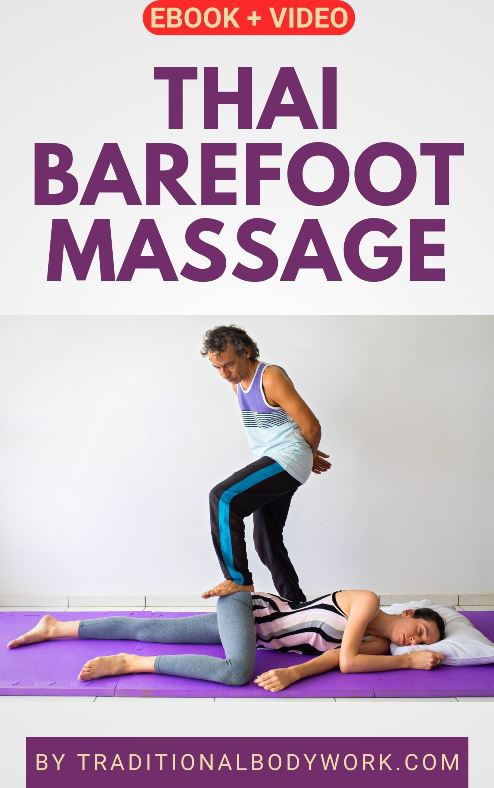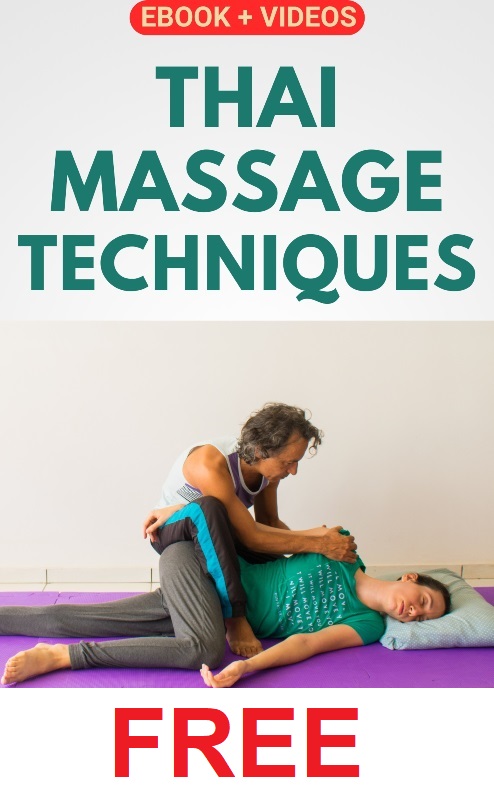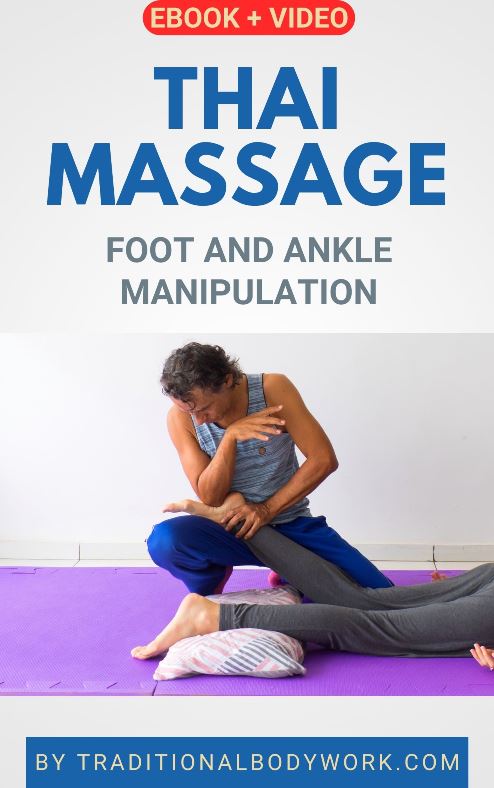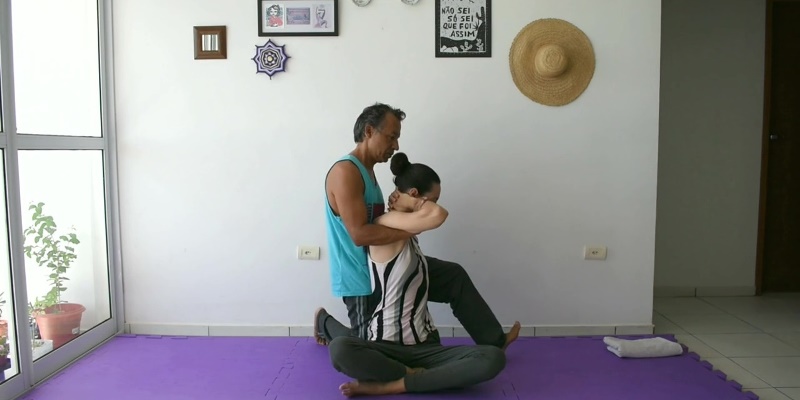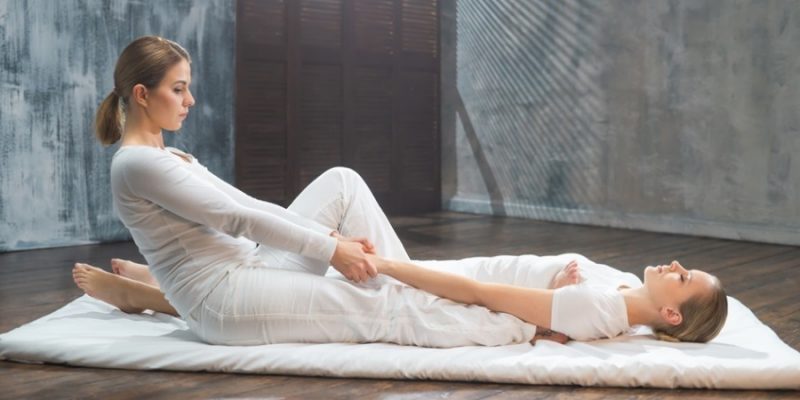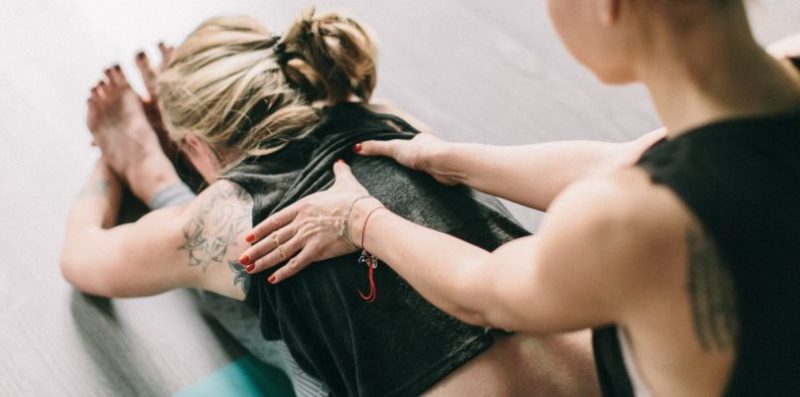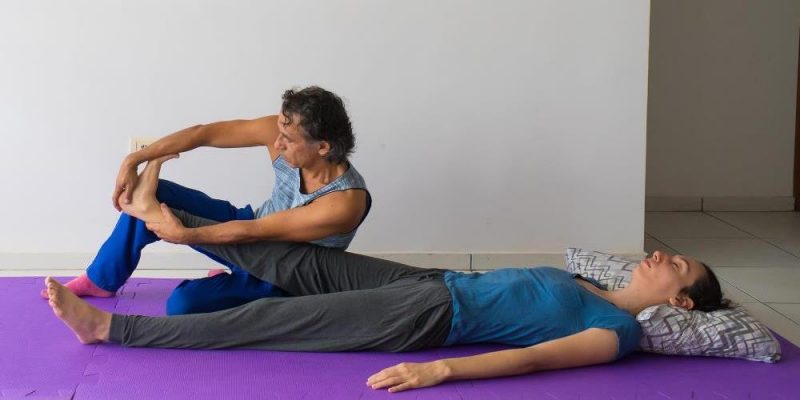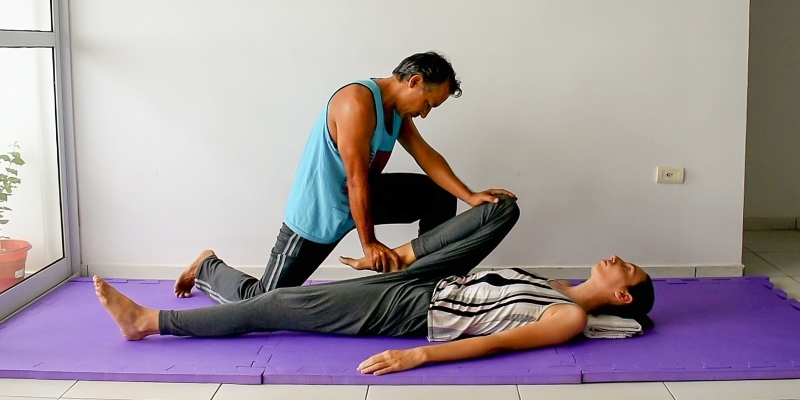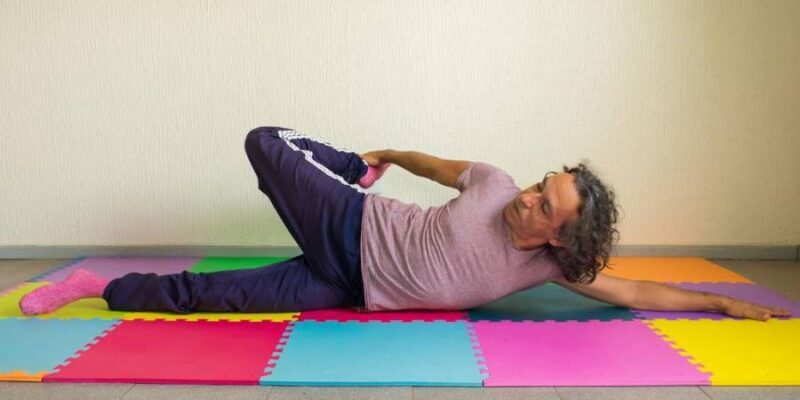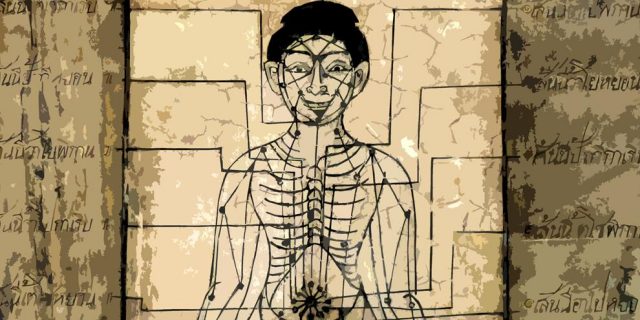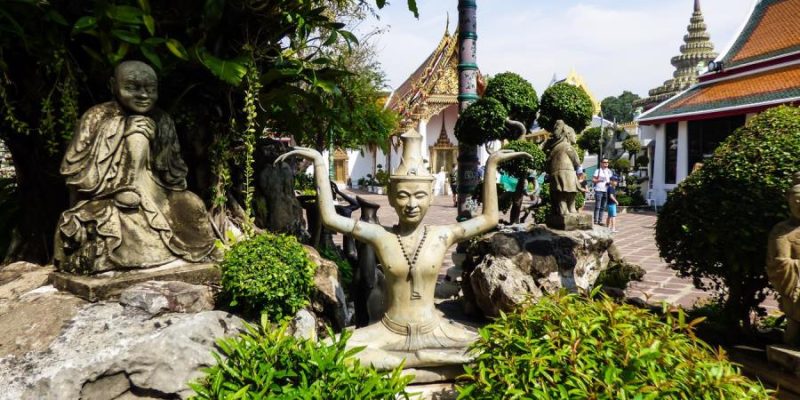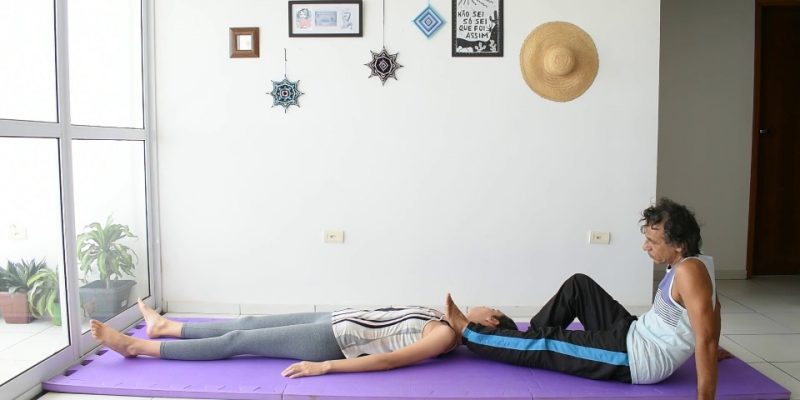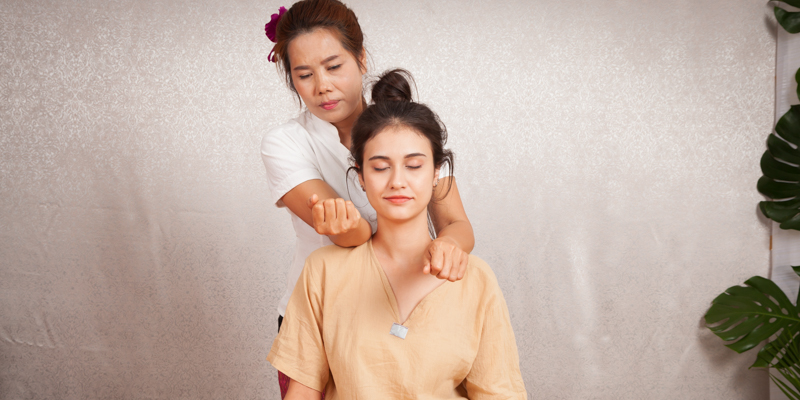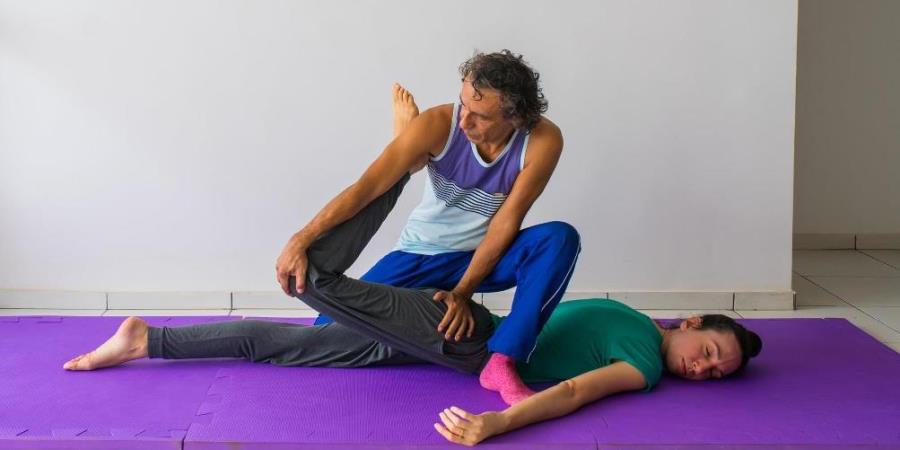
Thai Massage leg stretches make the muscles, tendons, and joints of the legs supple and strong, and as such prevent back pains, leg pains (feet, ankles, knees, calves, or thighs), hip pains, muscle cramps, and tendon, muscle and joints injuries.
Healthy muscles and “open” joints of the legs also promote a better posture, optimal blood circulation, physical balance, better ability to walk, climb, jump, and run, and they facilitate optimal range of movement for the feet, legs, and hips.
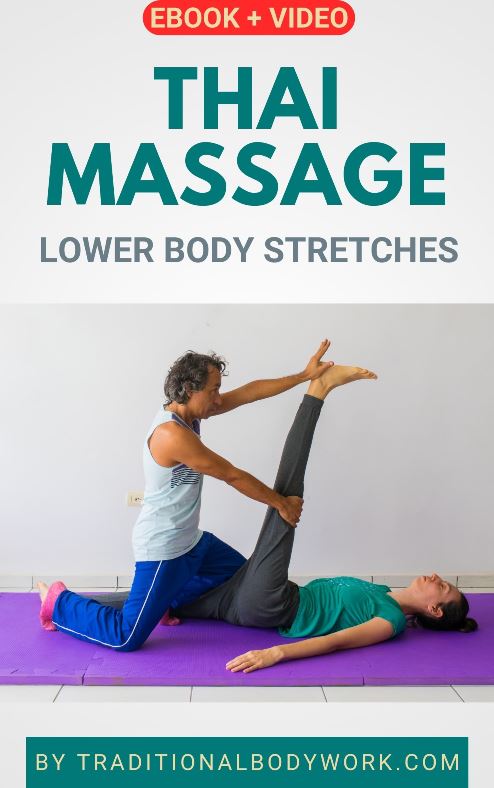
Tight lower body muscles can cause pains, diminish our range of motion and ability to stand comfortably, and lessen our feelings of wellbeing. For instance, tight hamstrings and/or tight quadriceps can both cause back pains (pulling the pelvis and spine) or knee pains. Tight hamstrings can also cause sciatica.
Tensed or tight calf muscles may, for instance, cause lower leg cramps and problems with sleeping, cause knee pains, may limit the range of motion in the ankles and as such give problems walking or climbing (for instance: the stairs) normally and comfortably. In general, healthy lower body muscles, tendons and joints promote feelings of lightness, fitness and well-being.
Traditional Thai Massage boasts a wide range of hip, foot, ankle and leg stretches, which can be carried out while the receiver is placed in the prone position, supine position, or in the side lying position.
It depends on the type of stretch the Thai Massage therapist wants to perform in which position the client is placed. By contrast, physical (dis)abilities of a receiver may limit the types of positions the receiver can assume and which stretches can be carried out accordingly. The latter also guides what types of stretches are actually possible to do with a specific person.



